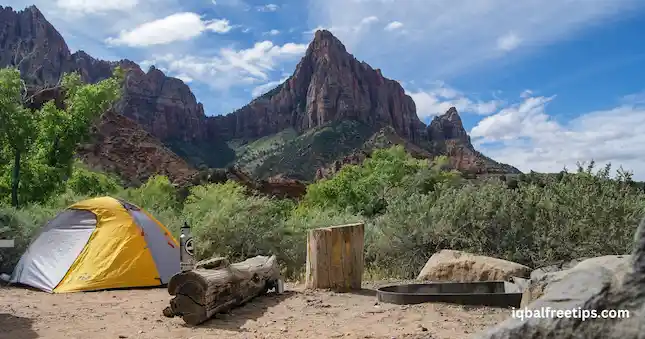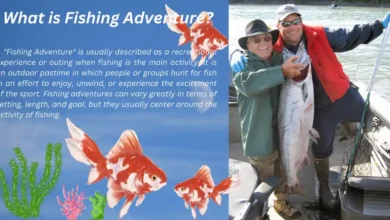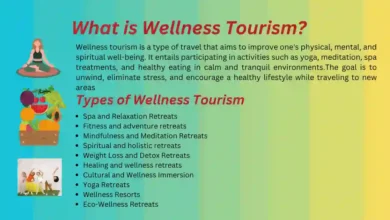
Camping in National Parks
Camping in national parks is a fully immersive outdoor experience that allows individuals and families to dwell on the natural beauties maintained inside these protected places. It entails erecting temporary structures, such as tents or camper vans, within the national park’s limits, such as designated campgrounds or backcountry sites. This type of outdoor leisure provides a one-of-a-kind opportunity to disengage from city life, reconnect with nature, and create lasting memories in some of the world’s most beautiful locations.
A well-liked and enjoyable outdoor activity, camping in national parks enables you to spend time in nature, unplug from the stresses of everyday life, and take in the wonders of the natural world. A variety of camping options are available in national parks, from developed campgrounds with facilities to more rustic and wilderness camping. The following information will assist you in organizing a camping trip in a national park.
Research and Planning
Select a National Park
Investigate the various national parks to select one that provides the environment and activities you’re interested in. Each Park features distinct topographies, biomes, and attractions of its own.
Reservations
Many well-liked campgrounds in national parks demand them, particularly during busy times. For information on availability and reservations, see the park’s official website or reservation system.
Challenges of Camping in National Parks
If you want to get close to nature and enjoy the great outdoors, camping in national parks can be a fantastic and gratifying experience. You should be aware that camping in national parks might provide a number of difficulties. These difficulties consist of the following:
Crowds
During peak seasons, national parks, particularly the well-known ones, can get quite crowded. As a result, there may be more rivalry for facilities, campsites, and popular hiking paths, which might result in noise, reduced seclusion, and increased noise.
Reservations and Permits
Especially during the busiest times of the year, many popular national parks require reservations and camping permits. These can be difficult to obtain and competitive, so it’s crucial to prepare and make reservations far in advance. Crowds: During peak seasons, national parks, particularly the well-known ones, can get quite crowded. As a result, there may be more rivalry for facilities, campsites, and popular hiking paths, which might result in noise, reduced seclusion, and increased noise.
Environmental Impact
There is a higher chance that human activity will have an adverse effect on the environment when there are many visitors. The ecosystems of the park may be harmed by improper waste management, trampled-upon delicate plants, and disturbed wildlife.
Limited luxuries
Campgrounds in national parks frequently have the bare necessities, such as restrooms and water sources, but it’s possible that they don’t have the luxuries that you could find at private campgrounds, like electricity or showers.
Weather and climate
Climate and weather can be variable in national parks. Be ready for rapid changes in weather, including rain, snow, and other elements that may affect your camping experience and safety.
Wildlife Encounters
Coming into contact with animals can be thrilling, but there are also risks involved. Insufficient food storage can draw animals to your campground, resulting in potentially hazardous interactions and harming the animals’ innate behavior.
Safety Concerns
The terrain in national parks is frequently harsh and remote. If you aren’t properly equipped, hiking and camping in these locations can provide risks, such as the possibility of being lost, hurt, or coming across dangerous situations.
Limited Connectivity
Communication and navigation can be difficult in many national parks due to poor or nonexistent cell phone reception. Before leaving, make sure someone is aware of your plans and carry a map, compass, or GPS device with you.
Types of Camping
Camping come in a variety of forms, each with varying degrees of comfort, adventure, and connection to the natural world. Some of the most popular camping styles are listed below:
Car Camping
Car camping is traveling to a campsite and leaving your car there. It frequently takes place in well-known campgrounds with amenities like bathrooms, picnic tables, fire rings, and perhaps even electrical hookups. Camping by car is more convenient and lets you pack more supplies and equipment.
Tent Camping
Tent camping is a traditional type of camping in which you erect a tent at the spot of your choice. This style of camping provides a more intimate experience with nature and a more rural setting. Basic campsites with little amenities and more established campgrounds with amenities are both options for tent camping.
Backpacking
Backpacking is trekking to a remote campsite while carrying all of your necessary supplies and equipment on your back. It’s a more immersive and difficult type of camping that gives you access to wilderness locations that are off-limits to motorized travel. Lightweight and small gear is frequently prioritized by backpackers.
RV Camping
RV camping is the practice of living out of a recreational vehicle (RV), camper van, or trailer. RVs range in size and level of luxury from compact campers to massive motorhomes. RV campers frequently have access to amenities including sleeping quarters, kitchens, and restrooms.
Glamping
Glamping is the practice of combining more opulent accommodations and amenities with the experience of camping. With cozy beds, electricity, and occasionally even private toilets, glamping sites can feature yurts, safari tents, cabins, and treehouses.
Hammock Camping
Camping in a hammock is a popular choice for backpackers and those who prefer a light and simple camping experience.
Bicycle Camping
Cycling while camping mixes the two activities. Camping enthusiasts load their supplies onto bicycles and pedal to their preferred campsite. Adventure seekers who want to ride their bikes around new places are fond of this style of camping.
Winter Camping
Camping throughout the wintertime means braving the chilly weather. To be warm and secure, particular equipment is needed, such as cold-weather sleeping bags, insulated clothing, and suitable shelter choices like four-season tents.
Desert Camping
Desert camping is conducted in dry areas and necessitates careful planning due to the high-temperature swings and scarcity of water sources. Ample water, protective gear, and sufficient shelter must all be brought by campers.
Beach Camping
When you camp on the beach, you can erect your tent close to the ocean. It’s a well-liked choice for admiring the coastline, swimming, and other water sports.
Group Camping
Camping with a bigger group of friends, family members, or other outdoor enthusiasts is known as group camping. It might be enjoyable to do so while spending time outdoors and sharing experiences and responsibilities.
Conclusion
It’s possible to appreciate nature’s splendor by camping in national parks. Numerous camping options accommodate all tastes, despite drawbacks like congestion and environmental damage. Camping may be a rewarding way to connect with nature through careful planning and reverence for it.
You may like:




